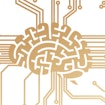
This team will investigate the deubiquitinating factor as a ‘hub’ risk factor for ASD, and elucidate how it acts to mediate cortical development and function.

This team will investigate the deubiquitinating factor as a ‘hub’ risk factor for ASD, and elucidate how it acts to mediate cortical development and function.

Gymrek aims to leverage bioinformatics advances in analyzing complex genetic variants to comprehensively evaluate the role of de novo DNA repeat variants in autism spectrum disorder.

Mitra will develop a novel methodology to analyze the transcriptional networks of genes involved in ASD and assign these genes into shared molecular pathways.

Perseverance on sameness is a core feature of autism. Kwan aims to combine state-of-the-art optical imaging and behavioral methods to test the possibility that perturbed learning-related activity may underlie inflexible behavior in an ASD mouse model.

Dinstein will identify early neural abnormalities in two- to four-year-old toddlers with autism using whole-night EEG recordings in a hospital sleep lab. Furthermore, he will examine whether toddlers with regressive and classical autism exhibit distinct abnormalities that may indicate differences in their underlying pathology when comparing their brain activity and sleep architecture with that of typically developing toddlers.

A number of studies have lead to the suggestion that disruptions to chloride homeostasis play a role in a variety of neurological and neurodevelopmental disorders. The neuron-specific potassium chloride co-transporter, KCC2, is the major chloride exporter in neuronal cells, and mutations in SLC12A5 (the gene encoding KCC2) have been reported in individuals with some neurodevelopmental disorders, such as autism spectrum disorder (ASD), epilepsy and schizophrenia. Further, results from KCC2 knockout and knockdown mice highlight the importance of this protein in proper neuronal function.

Little is known or understood about the molecular mechanisms responsible for social cognitive development and the diseases associated with its aberrations, such as autism spectrum disorder (ASD). Monitoring the concentration profile of molecules that are implicated in ASD is necessary to close a crucial understanding gap: how an organism’s social environment affects molecular-scale changes in the brain and corresponding alterations in social cognition. The key limitation in closing this gap hinges on sensors for neurohormones, such as oxytocin, implicated in social disorders.

Several key barriers exist to unraveling the mechanistic etiologies of autism spectrum disorder (ASD). There is increasing appreciation that ASD pathology, while genetically heterogeneous, may result from disruptions to common multicellular interactions that impact cortical circuitry and alter excitatory/inhibitory (E/I) balance. Duplication or triplication of maternally inherited 15q11-13, the chromosomal location where UBE3A resides, is one of the most common genetic variants linked to ASD. UBE3A is an E6 ubiquitin ligase that controls the levels of key synaptic proteins, and UBE3A activity has been shown to control E/I balance in the cerebral cortex of mice.

Autism spectrum disorders (ASDs) encompass a number of disorders that are typified by communication deficits, reduced behavioral flexibility, poor socialization, learning disabilities and a tendency toward repetitive behaviors. While the pathophysiology underlying ASDs remains largely unknown, the recent identification of gene mutations associated with ASDs has significantly advanced our understanding of these disorders. Many gene mutations found in ASDs have been shown to affect the formation, functional efficacy and plasticity of both excitatory and inhibitory synapses. Hence, a hypothesis of an imbalanced neuronal excitation and inhibition has been put forward as an underlying cause of ASDs.

Autism is a neurodevelopmental disorder, and sensorimotor disturbances are among the earliest signs of atypical development in autism, revealing themselves in early infancy. As every parent knows, infants spend most of their time asleep, and about half of that sleep time is spent in rapid eye movement (REM) sleep. One of the defining features of REM sleep is myoclonic twitching, a phenomenon which is thought to play a critical role in sensorimotor development. Twitching — jerky movements of the limbs, head, face and eyes — occurs abundantly and exclusively during REM sleep, with sensory feedback from twitching limbs acting as a primary driver of neural activity throughout the sensorimotor system. This suggests that twitching plays a role in shaping, tuning, and mapping the developing sensorimotor system and that alterations in twitching might serve as a useful model for tracking sensorimotor disturbances in autism.